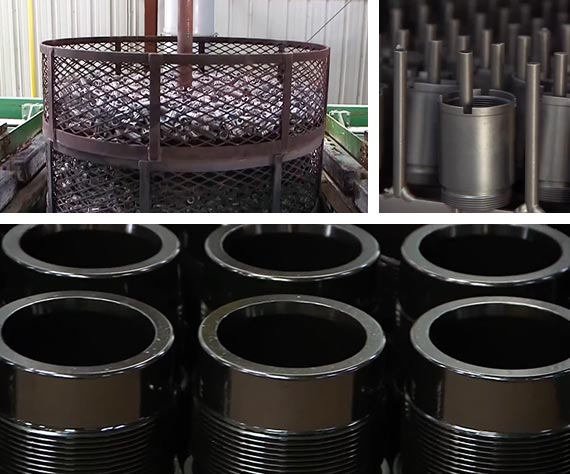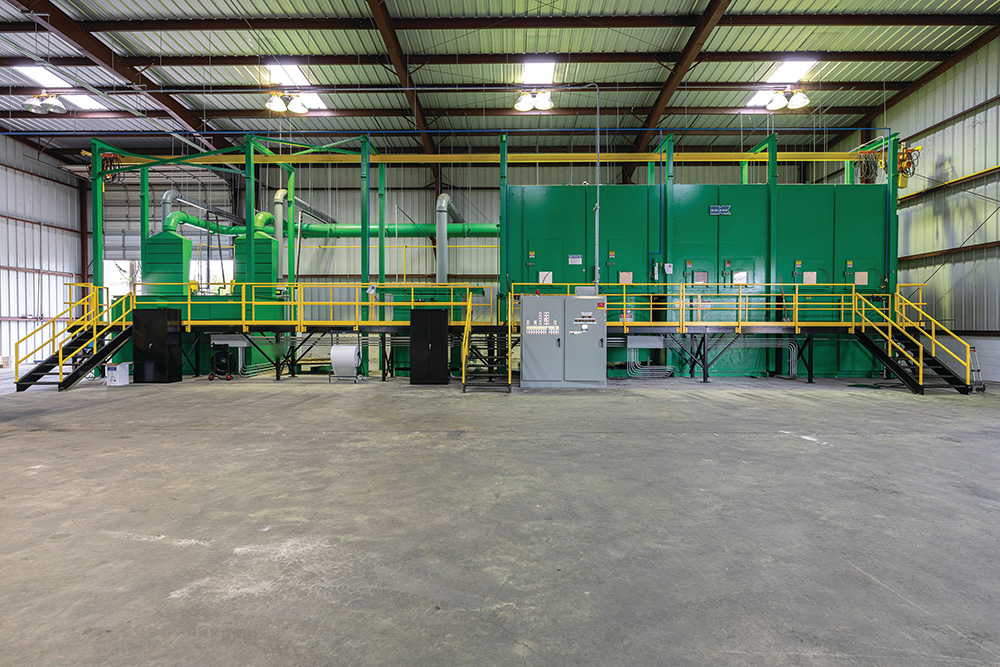Salt Bath Nitriding Services
SALT BATH NITRIDING OVERVIEW
Salt Bath Nitriding (SBN), also referred to as Liquid Nitriding and Ferritic Nitrocarburizing (FNC), is a specialized diffusion treatment that is used to cost-effectively enhance resistance to wear, friction, corrosion, and fatigue on all ferrous materials, including cast irons, plain carbon steels, low alloys, and stainless steels.
SBN also maintains superior dimensional stability compared to other high-temperature treatments, while hardening a part’s surface up to greater than 70 Rockwell “C” (1075 HV). Unlike coatings or plating, Salt Bath Nitriding is a nearly zero-growth process that adds only a few microns, thereby maintaining extremely tight tolerances and allowing SBN to be the final step in the manufacturing process.
QPQ (Quench-Polish-Quench) is an adjunct to SBN, typically used when superior corrosion resistance is needed, and/or to enhance surface finish. QPQ begins with a standard SBN cycle, which produces a layer of iron nitride. The part is then mechanically polished and re-immersed into an oxidizing salt bath, followed by rinsing. QPQ optimizes corrosion protection, while leaving the original dimensions intact. In addition, the SBN/QPQ process results in an attractive black surface finish, ideal for applications where cosmetic appeal is especially important.

NITRETEX CAPABILITIES
High Capacity
Nitretex can process applications up to 54″ in length and 36″ diameter in a single immersion, and up to 108” in length if double immersion is required.
Custom Processing
Nitretex utilizes the full Quench Polish Quench (QPQ) sequence, and variations designed to provide economical, customized solutions to meet customer-specific needs.
State-of-the-Art
SBN system provides maximum quality and cost-efficiency. We continually invest in advanced technology to ensure consistent, industry‑leading results.
Rapid Turnaround
Lead time is 5 business days or less for reliable, on time delivery. Our efficient processes help minimize downtime and keep your production schedules on track.

Salt Bath Nitriding Process
Our nitriding services follow a proven salt bath nitriding process designed to improve performance, longevity, and cost‑efficiency:
- Diffusion Step: During salt bath nitriding, nitrogen and carbon diffuse into the surface of the steel, forming a durable ferritic oxide layer.
- Compound Layer Formation: The process creates a hardened compound layer and diffusion zone that deliver excellent wear resistance and fatigue strength.
- Dimensional Control: Because this nitriding service operates at lower temperatures, it maintains nearly zero growth, preserving tight tolerances.
- Surface Finish: The treatment produces a dark, uniform black to gray color when combined with the quench polish quench process, providing superior corrosion protection and aesthetic appeal.
FAQs – Nitriding Services
How long does the salt bath nitriding process take?
Typical cycle times vary depending on part size and requirements, but most salt bath nitriding services can be completed within a day with expedited options, allowing for quick turnaround and reduced downtime.
What materials can be treated with salt bath nitriding?
Salt bath nitriding is effective on nearly all ferrous metals, including plain carbon steels, low-alloy steels, cast irons, and stainless steels.
What is the difference between salt bath nitriding and gas nitriding?
Salt bath nitriding uses a liquid salt bath to introduce nitrogen and carbon into the surface, while gas nitriding uses an ammonia gas atmosphere. Salt bath nitriding provides faster treatment, superior uniformity, and often better corrosion resistance.
How does the QPQ process improve results?
The quench polish quench (QPQ) process enhances the initial salt bath nitriding treatment by adding polishing and re‑oxidizing steps. This creates a QPQ finish, that maximizes corrosion protection and produces an attractive black nitrided surface.
Does salt bath nitriding affect part dimensions?
No. One of the key advantages of ferritic nitrocarburizing is its nearly zero‑growth nature, allowing parts to maintain extremely tight tolerances.
How does salt bath nitriding compare to carburizing or carbonitriding?
While carburizing and carbonitriding also diffuse carbon (and nitrogen, in carbonitriding) into the surface, they are typically performed at higher temperatures and can cause dimensional changes. Salt bath nitriding, as a ferritic nitrocarburizing process, operates at lower temperatures with nearly zero growth, providing superior dimensional control along with excellent wear and corrosion resistance.
Is masking available for salt bath nitriding?
No. Masking is not an option due to no masking material can withstand the temperature of the SBN process.
Explore Our Other Services
In addition to our specialized nitriding services, Nitretex also offers:
Spray Coatings
Durable, protective layers to extend service life and improve performance.
Learn more >
Phosphate Conversion
High-quality phosphate treatments for improved lubrication, wear resistance, and paint adhesion.
Learn more >
Blasting
Precision blasting methods that prepare surfaces for optimal finishing results.
Learn more >
INDUSTRIES WE SERVE
Nitretex specializes in delivering advanced surface treatment services – including Liquid Ferritic Nitrocarburizing (Salt Bath Nitriding/QPQ), spray coatings, phosphate conversion, and blasting – to a variety of industries worldwide.